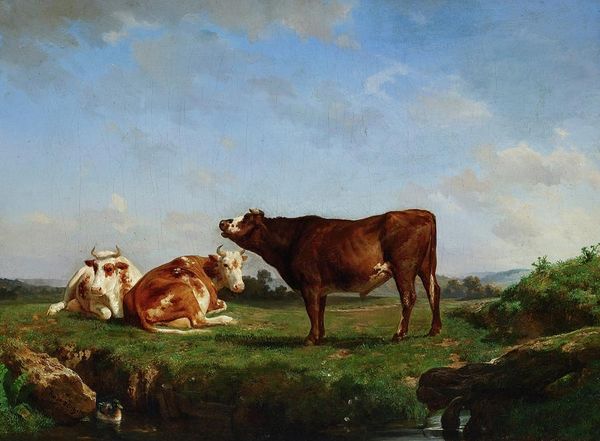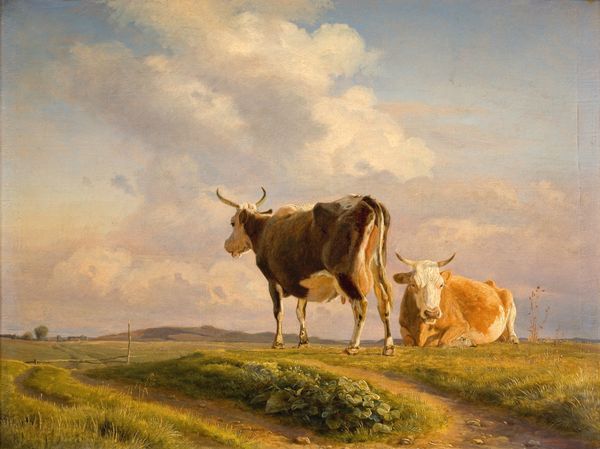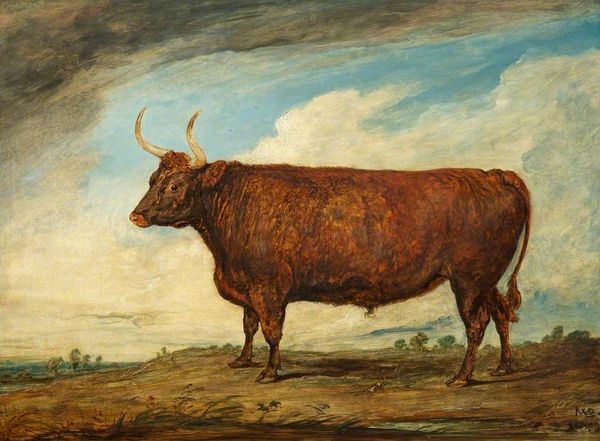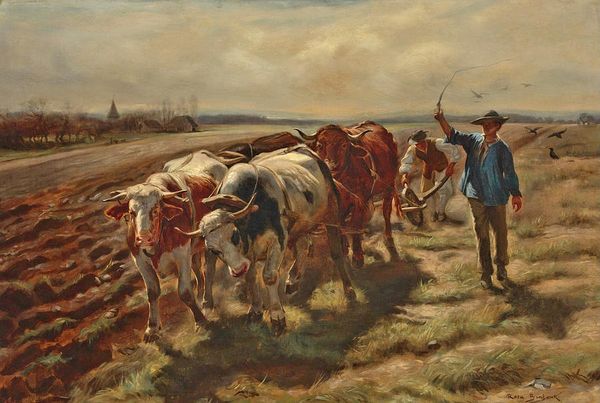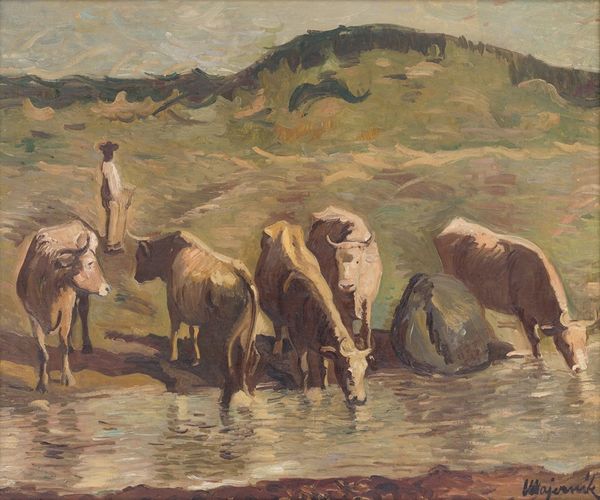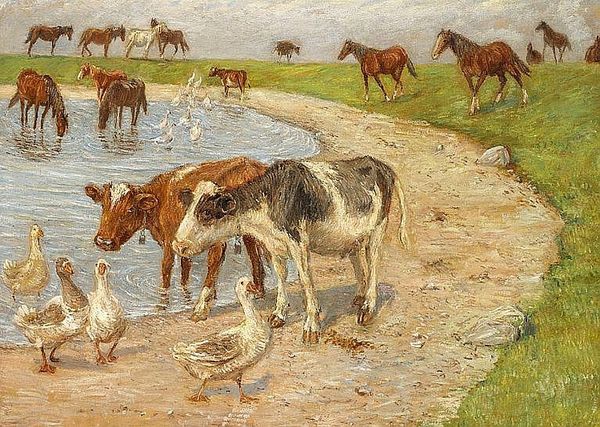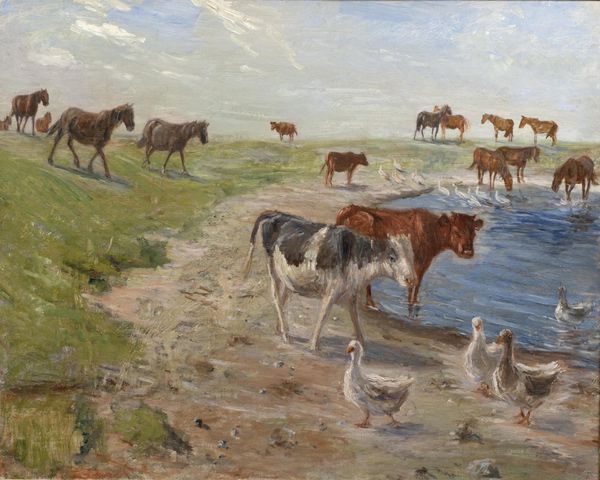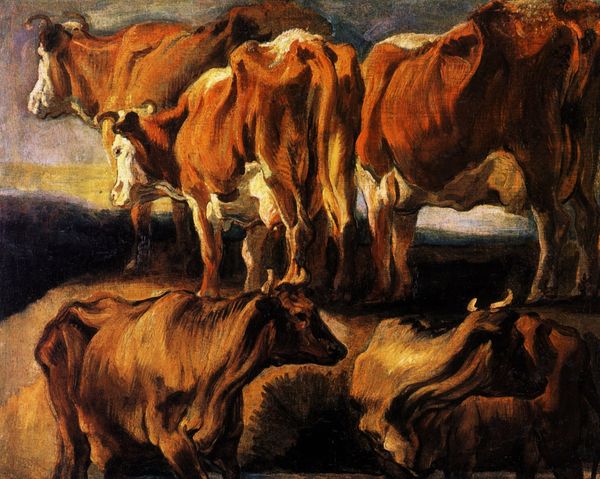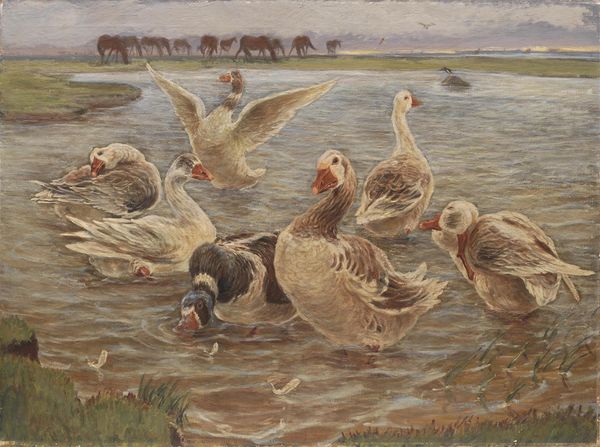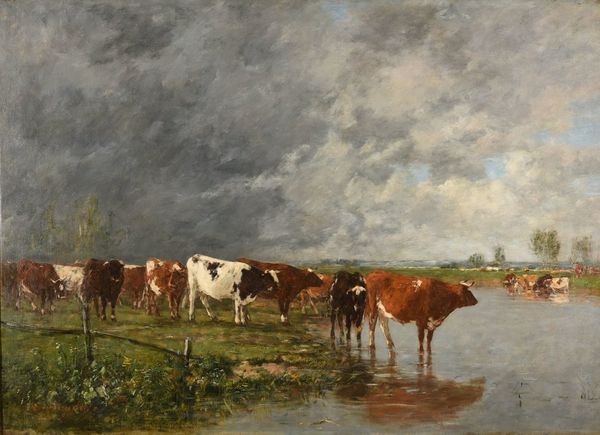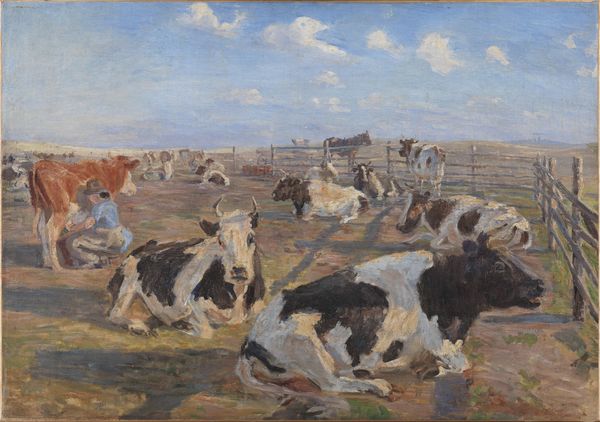
Copyright: Public domain
Editor: This is Theodor Philipsen's "Bissevejr," painted in 1909 using oil paints. The animals wading through shallow water immediately give me a sense of place, a rural environment heavily influenced by nature. What strikes you most about it? Curator: Well, for me, it's the materiality of the scene itself. Philipsen's process in depicting the animals wading is intertwined with their means of agricultural production. These are not romanticized figures but working animals, shown navigating their environment. Consider also the implications of "plein-air," the "open air," and the materials necessary for that practice: portability of paints, the constraints of time and weather on the painter. What's left unsaid by the composition of this pastoral image? Editor: Unsaid? Do you mean what it reveals about the social context, about rural labor perhaps? Curator: Precisely. These animals aren't simply aesthetic objects, their value rests within labor, dairy, and transport, it's a question of survival in a landscape that necessitates the management of these resources. We see the application of paint mimicking the shimmering surface, consider Philipsen's labor here – to what end? For aesthetic beauty or as a document of rural life at the turn of the century? Editor: That really changes my perspective. I was initially drawn to the serene composition, but now I see how it's connected to the means of survival and economic landscape of the time. Curator: Exactly. The painting becomes less about inherent beauty and more about understanding the context of its creation, labor, and the materiality of the world it depicts. Editor: I’ve certainly gained a richer understanding of how artistic choices reflect social and economic realities by seeing the relationship between artistic representation and the conditions of production and life in the society which created the image. Thanks for offering your insight. Curator: My pleasure; reflecting on the materiality of art opens new pathways for interpreting its meaning.
Comments
No comments
Be the first to comment and join the conversation on the ultimate creative platform.

